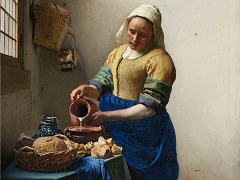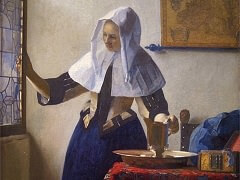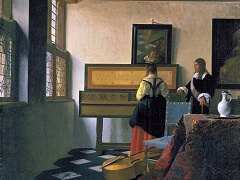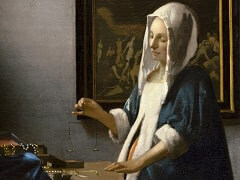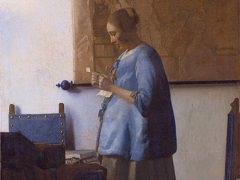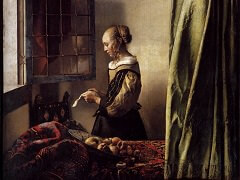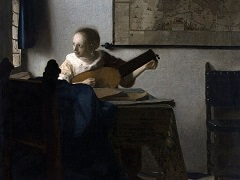A Lady Seated at a Virginal, by Johannes Vermeer
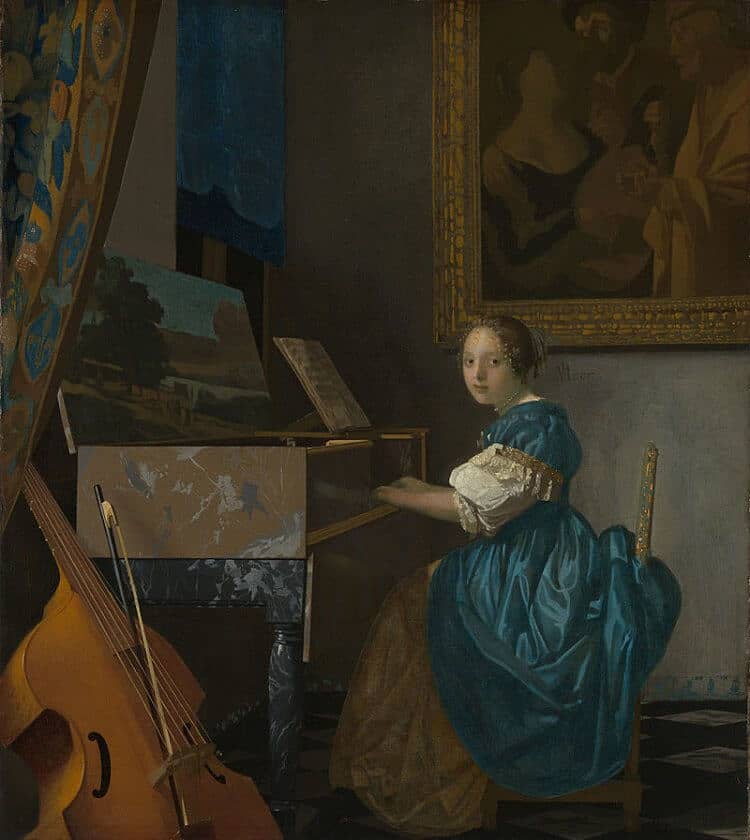
The oil painting depicts a richly dressed woman playing a virginal in a home with a tiled floor, paintings on the wall and some of the locally manufactured Delftware blue and white tiles of a type
that appear in other Vermeer works.
In A Lady Standing at the Virginals and A Lady Seated at the Virginals, Vermeer avoided the unsettled compositional schema of
The Guitar Player. As with his choice of subject matter and iconography, he reverted to his paintings of the mid-1660s for restrained, balanced compositions.
In his late works, Vermeer's interest in the surface appearance of objects had contradictory effects. His brushwork became more abstract as it was freed from the role of describing surface textures.
A Lady Seated at the Virginals is the most extreme example of this approach in his oeuvre and thus probably was his last painting. The highlights on the gilded picture frame and on the lady's blue
dress are as much abstract patterns of color as definitions of structure. Throughout the painting, the color has an extremely vivid, pure quality. This same concern for surface patterns and the
resulting simplification of forms, however, resulted in figures who remain bland and expressionless. None of the nuances of human psychology in his earlier works are present here.



